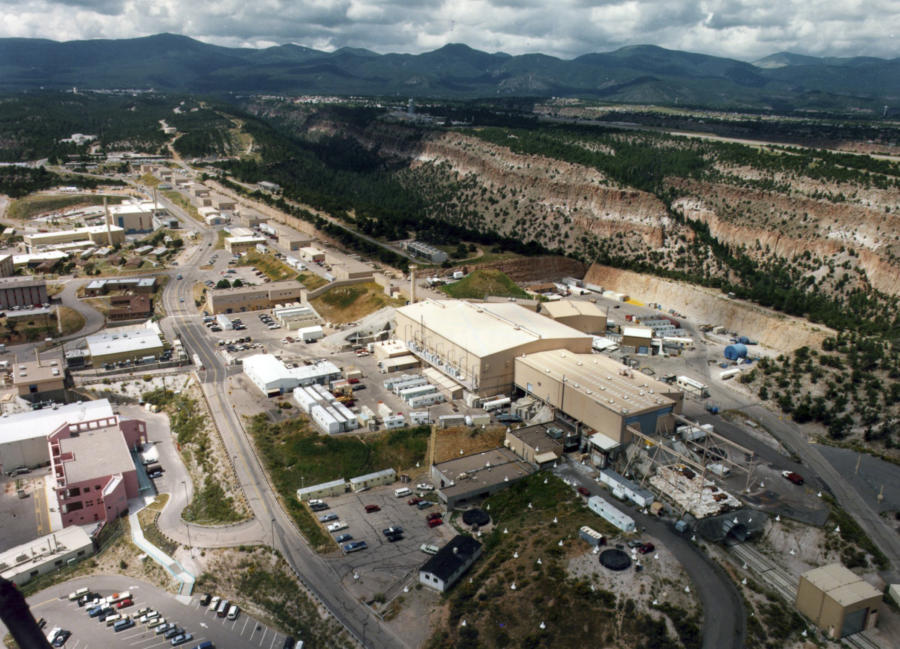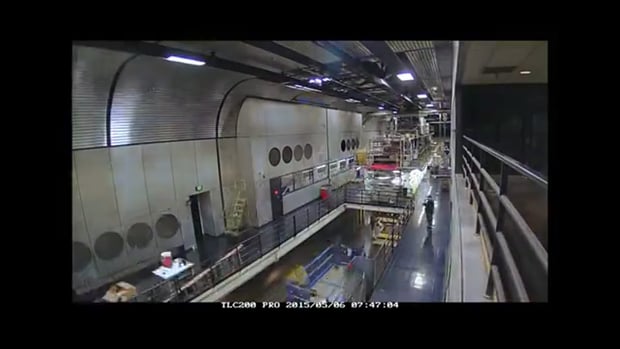JUNE 1, 2019 | BY MARK OSWALD | abqjournal.com

Copyright © 2019 Albuquerque Journal
SANTA FE – A building at Los Alamos National Laboratory with a price pegged at more than $1 billion apparently has some bad plumbing.
A federal safety oversight board recently reported that the operations staff at the Radiological Laboratory Utility Office Building found a leak in the building’s radioactive liquid waste system.
Lab watchdogs have labeled RLUOB, which got the green light for construction in 2011, as the most expensive building in New Mexico. The lab’s website says it’s part of a capital project to replace aging Cold War-era facilities.
Jay Coghlan of Nuclear Watch New Mexico, a frequent LANL critic who called attention to the recent safety board report, said the plumbing problem is symptomatic of the lab’s history of safety issues, which has included using the wrong kind of cat litter as a desiccant when packing a radioactive waste drum. A reaction in the drum caused it to breach in 2014 and contaminate the nation’s nuclear waste storage facility near Carlsbad.
“Remember, this is the gang that couldn’t get it straight between organic and inorganic cat litter, sending a radioactive waste drum that ruptured and closed the Waste Isolation Pilot Plant for three years, costing the American taxpayer three billion dollars to reopen,” Coghlan said in a statement. “Now we learn that they don’t know elementary plumbing for liquid radioactive wastes lines, and we’re supposed to trust them while they unjustifiably expand plutonium pit production?”
LANL is in the process of ramping up for a congressional mandate to the National Nuclear Security Administration, which oversees the nation’s weapons complex, for production of “pits,” the plutonium cores of nuclear weapons as part of a huge plan to modernize the nation’s nuclear arsenal.
A $1B building at Los Alamos National Laboratory was found to have a carbon steel valves that can’t handle liquid radioactive waste, according to a report by inspectors for the independent Defense Nuclear Facilities Safety Board. (Associated Press)
The leak was small and hasn’t caused any safety problems, according to the lab. But critics say the leak is just another example in a long line of problems at the national lab.
Engineers determined that the leaky valve and six others apparently were made from carbon steel – incompatible with radioactive liquid waste streams from chemistry operations at the building that include nitric and hydrochloric acids.
“The suspect valves are also in contact with stainless steel piping, which would create another corrosion mechanism,” says the report posted by inspectors for the independent Defense Nuclear Facilities Safety Board.
“The small amount of low-level radioactive liquid waste that leaked was completely contained inside of a sump designed for such an event,” said a lab spokesman. “Removing this system from service for maintenance activities does not impact safety or the mission. The system remains out of service and isolated until repairs are completed.”
Lab watchdogs have labeled RLUOB, which got the green light for construction in 2011, as the most expensive building in New Mexico. The lab’s website says it’s part of a capital project to replace aging Cold War-era facilities.
Jay Coghlan of Nuclear Watch New Mexico, a frequent LANL critic who called attention to the recent safety board report, said the plumbing problem is symptomatic of the lab’s history of safety issues, which has included using the wrong kind of cat litter as a desiccant when packing a radioactive waste drum. A reaction in the drum caused it to breach in 2014 and contaminate the nation’s nuclear waste storage facility near Carlsbad.
“Remember, this is the gang that couldn’t get it straight between organic and inorganic cat litter, sending a radioactive waste drum that ruptured and closed the Waste Isolation Pilot Plant for three years, costing the American taxpayer three billion dollars to reopen,” Coghlan said in a statement.
“Now we learn that they don’t know elementary plumbing for liquid radioactive wastes lines, and we’re supposed to trust them while they unjustifiably expand plutonium pit production?”
LANL is in the process of ramping up for a congressional mandate to the National Nuclear Security Administration, which oversees the nation’s weapons complex, for production of “pits,” the plutonium cores of nuclear weapons as part of a huge plan to modernize the nation’s nuclear arsenal.
“It never ends, all these relatively small things that are pretty much constant,” Coghlan added.
The report said the staff at RLUOB will “confirm the valve materials and if shown to be incorrect, investigate the cause of this failure in the design, procurement, and installation processes.”
“The valves were installed in 2013 as part of a modification to add straining and sampling capabilities that were not included in the original design,” says the report.
RLUOB “features special instrumentation and equipment for supporting national security science through the understanding of plutonium,” the lab’s website says. “Laboratory space is outfitted with state-of-the-art analytical instruments, gloveboxes, open-front boxes, fume hoods, gloveports, enclosure coating and double-door transfer systems.”
“From its robust design to its advanced scientific equipment, RLUOB is essential to the Laboratory’s national security mission in support of NNSA’s nuclear weapons program,” the website adds.

